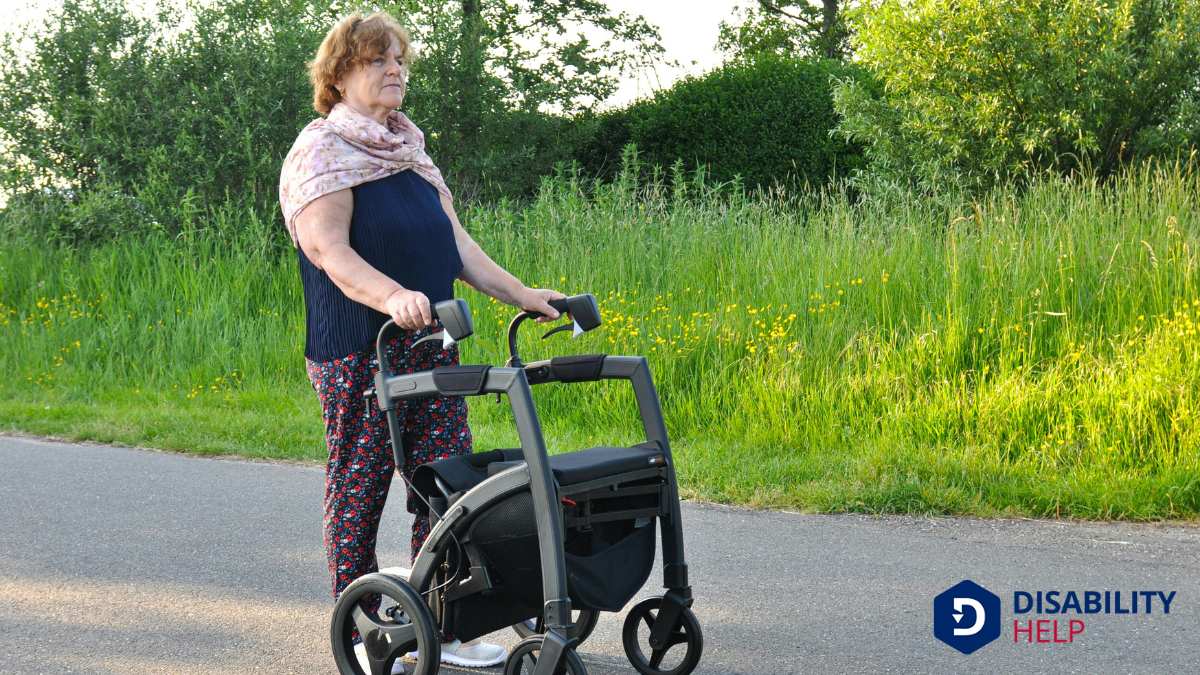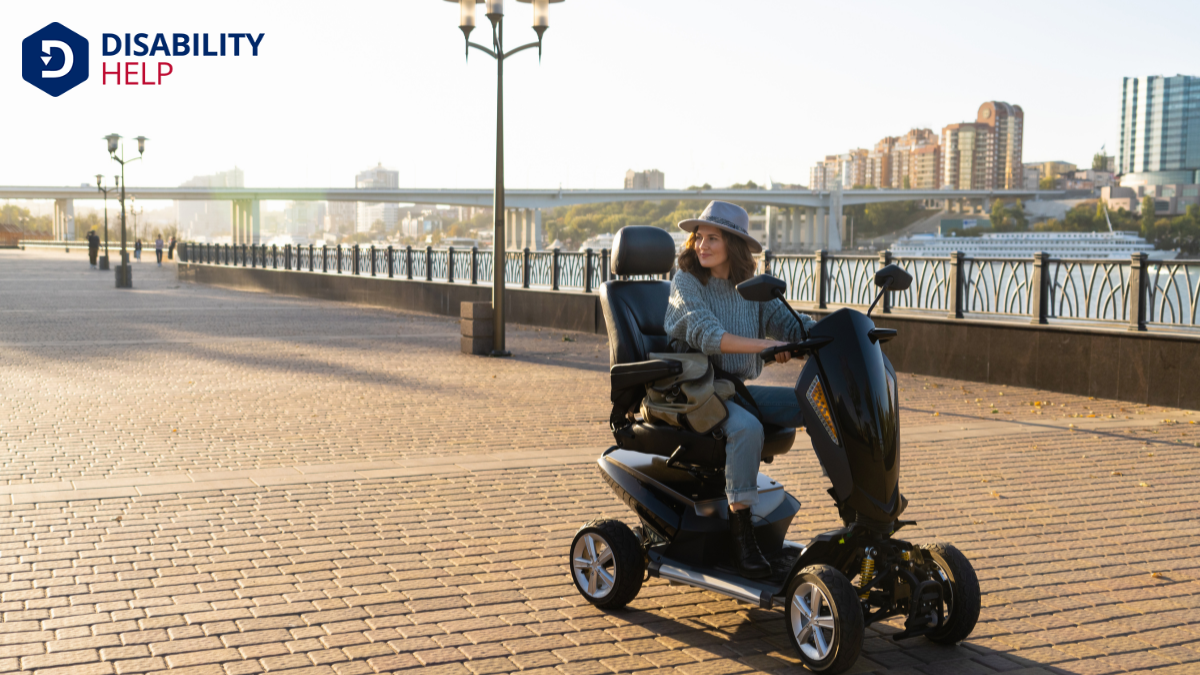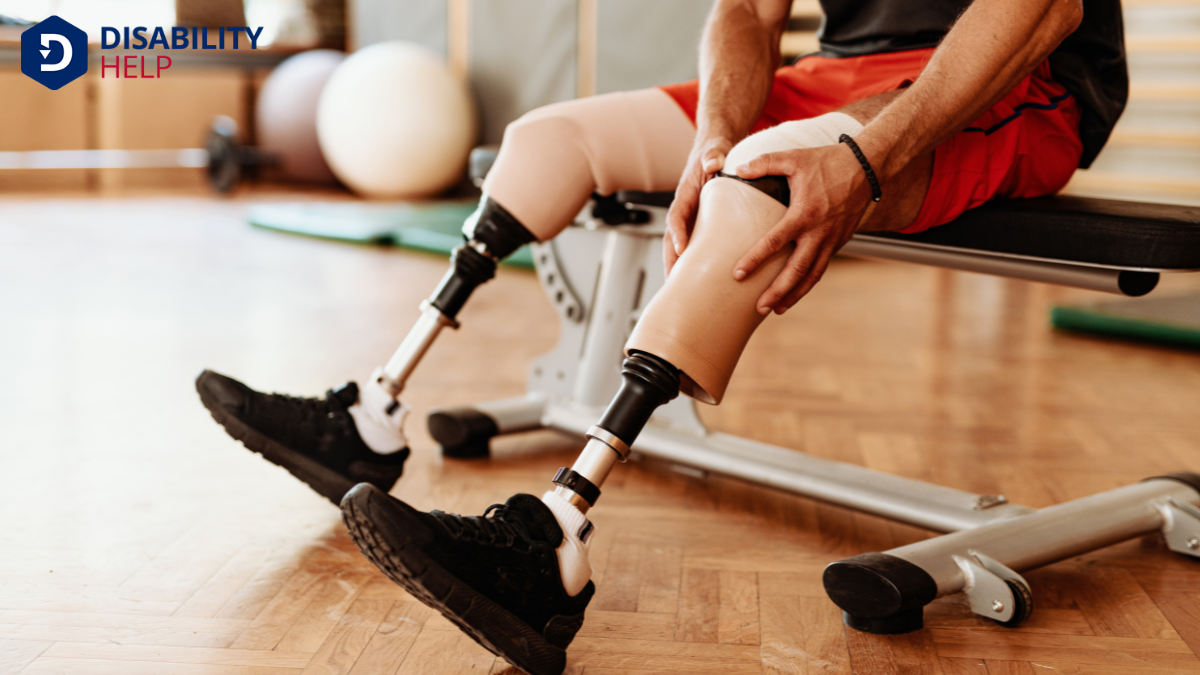When we think about assistive devices that promote independence, rollators come to mind. They offer stability with their four wheels, hand brakes, and even a built-in seat for breaks. The adjustable height settings guarantee comfort, while storage compartments are handy for carrying essentials. Rollators empower people to move freely and confidently in their daily activities. Curious about how they compare to other mobility aidsDevices designed to help individuals move around more easily, such as canes, walkers, or wheelchairs...? Let's explore together.
Key Takeaways
- Rollators provide increased mobility with wheels, brakes, and a seat for independent movement and rest.
- Motorized wheelchairs offer enhanced independence with adjustable seating and user-friendly controls for varied environments.
- Mobility scooters facilitate independent travel with battery-powered convenience and easy navigation.
- Custom prosthetic limbs restore mobility through personalized design, advanced materials, and natural movement technology.
- Smart mobility devices use technology and sensors to enhance navigation and provide real-time assistance.
Canes and Walking Sticks
Canes and walking sticks are essential tools for enhancing mobility and stability. They offer us the support we need to maintain balance and reduce the risk of falls. By redistributing weight, they help alleviate pressure on joints, making walking less painful and more comfortable.
We can choose from various styles, such as single-point canes for minor balance issues or quad canes for added support.
When selecting a caneA mobility aid used to assist with balance and walking., it’s vital to contemplate the height and grip style that best suits our needs. Adjustable canes offer flexibility, while ergonomic handles provide comfort.
Walking sticks, often used for hiking, offer stability on uneven terrain. These assistive devices empower us to maintain independence and confidently navigate our environment, enhancing our overall quality of life.
Walkers and Rollators

Let's explore how walkers and rollators can enhance our mobility options.
We'll look at different types of walkers, each designed to meet specific needs, and how rollators offer added benefits like increased stability and convenience.
Understanding these devices will help us choose the best support for our mobility goals.
Types of Walkers
Maneuvering the world with confidence and ease is essential for those of us who rely on assistive devices, and walkers and rollators play a pivotal role in enhancing mobility.
Let's explore the types of walkers available to us. There are standard walkers, which provide stability with four solid legs and require us to lift them for each step. They're ideal for those needing maximum support.
Two-wheel walkers add wheels to the front, offering a blend of support and ease of movement. For increased mobility, rollators come with four wheels, hand brakes, and a seat, allowing us to rest when needed.
Each type has unique features tailored to our varying needs, ensuring we maintain independence while maneuvering our daily lives.
Benefits of Rollators
Exploring the various types of walkers naturally leads us to the many advantages rollators offer.
First and foremost, rollators provide increased mobility with their wheels, allowing us to move smoothly over various terrains. They’re equipped with brakes for safety, which we can engage whenever we need to stop or rest.
Speaking of rest, most rollators come with built-in seats, offering a convenient place for us to sit when we’re tired. Storage compartments are another boon, enabling us to carry personal items without hassle.
Additionally, their adjustable height settings guarantee a personalized fit, enhancing comfort and posture.
With rollators, we gain more than just mobility; we gain confidence and independence, empowering us to explore our world with ease and assurance.
Manual Wheelchairs
Let's explore manual wheelchairs and the variety they offer.
There are different types designed to suit various needs, from lightweight frames for easy maneuverability to more robust models for enhanced durability.
We'll also look at how these wheelchairs can boost independence and improve overall quality of life for users.
Types of Manual Wheelchairs
When it comes to manual wheelchairs, there are several types designed to meet various mobility needs and preferences.
We've standard wheelchairs, which are durable and ideal for everyday use. These are great for those who don't require customization.
For more active users, lightweight wheelchairs offer easier maneuverability and are easier to transport.
If portability is a priority, transport wheelchairs, with smaller rear wheels, provide a convenient option for short trips.
For those needing individualized support, custom wheelchairs can be tailored to fit specific body dimensions and needs.
Finally, sports wheelchairs cater to athletes, offering enhanced stability and speed for various sports activities.
Benefits of Manual Wheelchairs
Although manual wheelchairs require physical effort, they offer several benefits that make them an excellent choice for many individuals. First, they grant us greater control and independence in our daily movements. We can navigate various environments more easily, tailoring our speed and direction to suit our needs.
Manual wheelchairs are often more lightweight and compact, making them easier to transport and maneuver in tight spaces. This portability allows us to participate in a wider range of activities without cumbersome equipment holding us back.
Additionally, using a manual wheelchair can improve our upper body strength and cardiovascular health over time. The physical engagement required encourages regular exercise, which contributes to overall well-being.
Whether at home, work, or outside, manual wheelchairs enable us to stay active and independent.
Motorized Wheelchairs
Motorized wheelchairs transform the way individuals with mobility challenges navigate their environments, offering enhanced independence and ease of movement. With the press of a button or a joystick, we can traverse various terrains without relying on physical strength or assistance. This technology empowers us to maintain an active lifestyle, whether we're indoors or outdoors.
Motorized wheelchairs come equipped with features like adjustable seating, tilt functions, and varying speed controls, allowing us to customize our experience based on comfort and needs.
These wheelchairs are designed to fit into our daily routines seamlessly, ensuring that tasks like reaching high shelves or moving through tight spaces are no longer obstacles. By embracing motorized wheelchairs, we open up a world of possibilities, fostering autonomy and confidence in our everyday lives.
Mobility Scooters

Mobility scooters revolutionize how we approach independent travel, providing a practical solution for those seeking to maintain an active lifestyle despite mobility challenges.
These scooters offer a convenient way to navigate various environments, from busy city streets to serene parks. They’re designed with user-friendly controls, allowing us to move with ease and confidence.
Many models come equipped with adjustable seats, armrests, and storage compartments, adding comfort and functionality.
We can choose from a range of sizes and styles, ensuring a perfect fit for our unique needs. The battery-powered design means we don’t have to worry about running out of energy during our outings.
Exoskeletons
Exoskeletons are an exciting advancement in assistive technology, transforming how we think about mobility support. They’re wearable devices that help individuals with mobility challenges by mimicking the body’s natural movements.
Imagine a personal robotic suit that supports our legs, helping us walk, stand, or even climb with ease. These devices have opened up new possibilities for people with spinal cord injuries, muscular dystrophyA group of genetic diseases causing progressive weakness and loss of muscle mass., or other mobility impairments.
Exoskeletons work by providing powered support, reducing the strain on muscles and joints. They offer a blend of technology and human capability, promoting independence by enabling us to perform daily activities that might otherwise be difficult or impossible.
Stairlifts and Platform Lifts
While exoskeletons represent a leap in wearable mobility technology, stairlifts and platform lifts offer practical solutions for traversing vertical spaces in our homes and public buildings.
These devices provide essential support for individuals with limited mobility, enabling them to access different levels easily and safely.
Stairlifts are installed along staircases, allowing users to sit comfortably as they’re transported up or down the stairs.
Platform lifts, on the other hand, cater to individuals who use wheelchairs or scooters, offering a platform that moves vertically between floors.
Prosthetic Limbs

Prosthetic limbs have transformed the lives of countless individuals, offering renewed independence and functionality. They’re not just replacements but extensions of ourselves, tailored to meet our unique needs.
These devices allow us to perform everyday tasks with greater ease and confidence. Let’s explore some benefits and features of prosthetic limbs:
- Customization: Prosthetic limbs can be personalized to fit our specific size, shape, and aesthetic preferences, ensuring comfort and usability.
- Advanced Materials: Lightweight and durable materials like carbon fiber enhance mobility and reduce fatigue, making daily activities more manageable.
- Enhanced Technology: Some prostheticsArtificial devices that replace missing body parts, such as limbs, often used after amputations. incorporate robotics and sensors, allowing for more natural movement and control.
- Improved Quality of Life: By restoring mobility, prosthetic limbs empower us to engage more fully in social, recreational, and work activities.
Through these innovations, prosthetic limbs greatly enhance our mobility and independence.
Smart Mobility Devices
As technology continues to advance, smart mobility devices are revolutionizing how we navigate our environments. These innovations are designed to enhance our independence and improve quality of life.
Imagine us using a smart wheelchair equipped with sensors that help avoid obstacles or a walkerA mobility aid with a metal frame and sometimes wheels, used by individuals who need additional supp... that monitors our health essentials while providing support. These devices are more than just tools; they're companions that increase safety and confidence.
Moreover, smart mobility devices often come with connectivity features, allowing us to sync them with our smartphones. This connectivity lets us receive real-time updates, track progress, and even contact assistance if needed.
Conclusion
In today's world, we've got a wealth of assistive devices that can transform lives by promoting independence and enhancing mobility. From canes and walkers to advanced exoskeletons and smart mobility devices, these tools cater to diverse needs and preferences. Rollators, in particular, stand out with their blend of stability and convenience. By embracing these innovations, we're not just improving mobility; we're empowering individuals to confidently engage with their environments and live fuller, more independent lives.






